New technologies are driving in-home care, at-workplace care, and in-car care — thereby improving prevention, detection, behavior change, and caregiver support.
According to a recent EY report, consumers will increasingly conduct virtual visits with doctors, nurses, and care coaches through cell phones, tablets, and laptops over the next decade. Not only will smart technologies help improve the quality of life for patient-consumers, but the data generated will increasingly be used to help inform drug development, clinical trials, and care delivery.
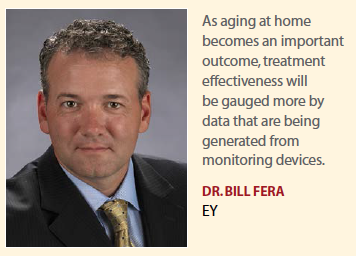 Many companies outside the life-sciences industry are creating solutions that allow for the integration of consumer-generated personal health data from fitness wearables, remote monitoring devices, and health apps, as well as medical devices such as blood pressure cuffs, health patches, and glucose meters, into existing and new connected health services.
Many companies outside the life-sciences industry are creating solutions that allow for the integration of consumer-generated personal health data from fitness wearables, remote monitoring devices, and health apps, as well as medical devices such as blood pressure cuffs, health patches, and glucose meters, into existing and new connected health services.
These connected health solutions and services have been designed to facilitate coordinated care across the health continuum from healthy living and prevention, to diagnosis and treatment, to home care. This emerging trend represents a two-fold opportunity for pharma companies: creating solutions that enhance patient outcomes while gaining access to de-identified patient generated data that can guide drug development and business strategies.
For example, organizations such as Philips and Validic are collaborating to create connected health solutions that deliver patient information to physicians using health data that are being generated within clinical setting and remotely. Philips’ HealthSuite digital platform has integration capabilities with electronic medical records and other clinical data sources to support health systems in the delivery of care coordination solutions. Patients and their care providers are given actionable and longitudinal insights through the combination of clinical and personal health data. The collaboration with Validic will enable Philips to integrate personal health data from patients’ various clinical and consumer health technologies, such their as wearables, fitness equipment, wellness applications or in-home medical devices.
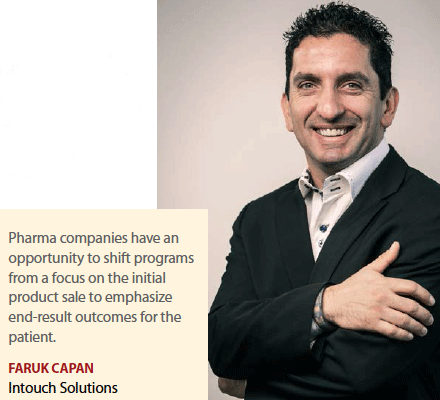 Validic has also partnered with Sutter Health, a 30-hospital system in California with 12 million patients, to develop a preventive model of care centered around a team of physicians who monitor patients remotely. The goal is to identify changes in patients’ conditions that indicate the need for intervention or examination at a Sutter facility before hospital re-admission is necessary. Sutter Health created a hypertension management program internally that connects directly to the blood pressure monitors, weight scales, and activity trackers of patients with hypertension.
Validic has also partnered with Sutter Health, a 30-hospital system in California with 12 million patients, to develop a preventive model of care centered around a team of physicians who monitor patients remotely. The goal is to identify changes in patients’ conditions that indicate the need for intervention or examination at a Sutter facility before hospital re-admission is necessary. Sutter Health created a hypertension management program internally that connects directly to the blood pressure monitors, weight scales, and activity trackers of patients with hypertension.
“These are high-risk hypertensive patients," says Drew Schiller, co-founder and chief technology officer, Validic. “If they have a fluctuation in blood pressure, if they have an increase in weight, if they have a decrease in physical activity, all of this information feeds into the Sutter Health dashboard and there’s a care management team that looks at these data every morning."
Automated algorithms within the dashboard segment patients into three categories: those who need intervention immediately, those who need a follow up, and those who can continue forward with the care plan as is. According to Mr. Schiller, this program has been “phenomenally" successful.
“Patients love it; they’re getting better care, but more important than that, there are fewer re-admissions to the hospital," he says.
With chronic conditions such as multiple sclerosis, diabetes, and rheumatoid arthritis on the rise, adherence to prescribed medications is more critical than ever, and smart health devices can help with this, says Chris Evans, VP, innovation, West Pharmaceutical Services. This is also an opportune situation for pharma companies to create solutions that help patients be compliant, as chronic disease treatments are often administered at home by the patient.
“One way pharmaceutical and drug manufacturers can tackle the adherence problem is to integrate the self-administration process into technology tools patients use in their daily life, such as smartphones or similar devices," Mr. Evans says.
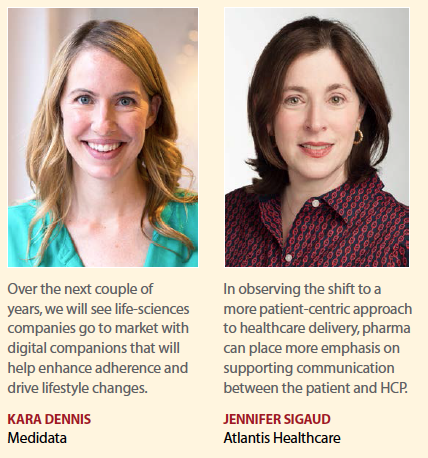 West’s collaboration with HealthPrize Technologies is an example of how this can be addressed. The two companies have partnered to integrate West’s self-injection technologies with HealthPrize’s software-as-a-service medication adherence and patient engagement platform to create an end-to-end adherence solution that not only tracks when patients take their medication but also educates and engages patients to help increase adherence and medical literacy; rewards compliance with prescribed treatment plans; and provides valuable insights regarding engaged patients.
West’s collaboration with HealthPrize Technologies is an example of how this can be addressed. The two companies have partnered to integrate West’s self-injection technologies with HealthPrize’s software-as-a-service medication adherence and patient engagement platform to create an end-to-end adherence solution that not only tracks when patients take their medication but also educates and engages patients to help increase adherence and medical literacy; rewards compliance with prescribed treatment plans; and provides valuable insights regarding engaged patients.
“This collaboration allows patients to use electronically connected drug delivery systems to track in real time when they take their medication, and reward them for compliance," Mr. Evans says. “The platform is designed to be accessed through a mobile app or Web portal and gathers information such as dosage and device history use for trends and analytics."
The platform also offers opportunities for full reporting of de-identified data, providing pharmaceutical companies with insights on patients using their products. These data can be used to direct the development of new chronic disease therapies, as well as to improve current therapeutic offerings. The end result is improved adherence and the collection of critical data that can guide patients, companies, and physicians to better outcomes.
Pharma’s Role in the Smart Health Ecosystem
Pharma has a significant role to play in this new interconnected healthcare environment. For one thing, there is an opportunity for pharma to help provide compliance and monitoring programs such as those described above. These platforms can offer value to both physicians and patients.
“If physicians offered more of these types of programs for their patients, they would 100% participate in them," Mr. Schiller says. “Now it’s becoming easier and even more cost-effective for health systems, like at Sutter Health, to implement similar remote monitoring programs for patients as a way to better engage, manage and coordinate care for them."
Today’s physician is often prescribing a medication combined with some behavior change, so if a pharmaceutical company was able to help the patient manage his or her condition and change certain behaviors, this would make the drug more effective and make the patient much more compliant, Mr. Schiller says.
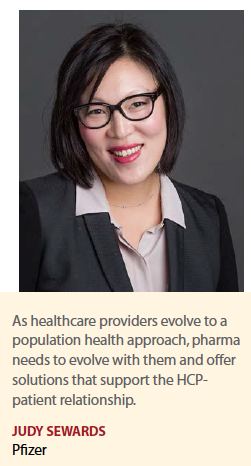 By using smart health technology, pharma can provide an opportunity for an important dialogue to take place between the patient and HCP. Tools that help the physician share real-time patient data on a wide range of topics, including knowledge, behaviors, medication adherence, side effects, emotion, and mood can prompt important discussions, says Jennifer Sigaud, managing director, US, Atlantis Healthcare.
By using smart health technology, pharma can provide an opportunity for an important dialogue to take place between the patient and HCP. Tools that help the physician share real-time patient data on a wide range of topics, including knowledge, behaviors, medication adherence, side effects, emotion, and mood can prompt important discussions, says Jennifer Sigaud, managing director, US, Atlantis Healthcare.
“This dialogue may be encouraging: looks like you are doing well; supportive: seems like you may be having a problem with x; corrective: sounds like you need some assistance managing side effects; and anything in between or a combination of these things," she says.
According to Susan Garfield, DrPH, principal, EY, connected health solutions will add tremendous impact and value to the healthcare system by improving outcomes and lowering costs, and freeing up time for physicians.
“As patients are able to care for themselves more in the home and away from expensive care centers such as the ER, outpatient clinics and other care facilities, we can really begin to quantify from a cost standpoint the impact that connected solutions may be able to have," she says. “Resulting clinical and cost data will enable nurse practitioners and other care managers to take more active roles, especially with chronic disease patients, allowing physicians to focus their attention on patients who are more severe, more complex, or have more multimodal disease presentations."
The advent and continued use of technology represents a more user-led and patient-centric approach to healthcare delivery and provides the perfect space for pharma to focus on supporting communication between the patient and HCP, Ms. Sigaud adds.
Advances in technology can help a patient track and manage many facets of self-care and make better decisions around when to reach out to a HCP for assistance and intervention. Data collected through technology can be a cost-effective way to enable HCPs to monitor patient self-management.
“Because of this real-time dialogue, communication via technology can be a good, cost-effective step for triage," Ms. Sigaud says. “Smart technology also allows the opportunity for intervention before a serious issue arises, bringing the capability to reduce medical costs and prevent hospital admission/readmissions."
There’s been talk for years about bringing value beyond the pill, and this is an opportunity for the pharma industry to provide interaction that could have meaningful impact on patient outcomes, Dr. Garfield adds.
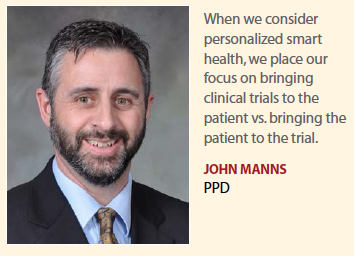 “Patient outcomes could be improved if pharma companies could provide an intervention for specific patient behavior that could change the outcome versus today’s give-someone-a-pillbox-and-hope-for-the-best model."
“Patient outcomes could be improved if pharma companies could provide an intervention for specific patient behavior that could change the outcome versus today’s give-someone-a-pillbox-and-hope-for-the-best model."
Beyond the technology capability, the aging population is also driving the need for remote healthcare systems, says Bill Fera, M.D., principal at EY.
“Aging at home has become a critical variable because the demographic transition of having an increasingly aging population is also driving technology’s applicability to the general population," he says.
It is imperative that the industry figures out exactly how it can harness the data to be more targeted in the way that patients interact, rather than just dumping a bunch of data in the hopes that it has some value. Tools to analyze the data are key to further integration of information.
“As aging at home is becoming more of an important outcome, treatment effectiveness will be gauged by these monitoring devices and the data that are being generated from them in conjunction with the therapy," Dr. Fera says.
Pfizer Leads in Providing Patient Solutions
Pfizer is one pharma company that has already started to provide solutions designed to help patients track and manage their treatments and conditions. According to Judy Sewards, VP, head of digital strategy and data innovation at Pfizer, the industry as a whole should participate in the ecosystem that collects data from patients and shares the data with providers and institutions while meeting patient privacy needs.
“For example, at Pfizer we have a range of mobile solutions, such as HemMobile, which helps patients log their infusions, keep track of bleeds, and track their activity levels, all of which are keys to managing hemophilia," she says. “The information collected in HemMobile is summarized in a report that patients can opt to share with their HCPs on their annual visit, allowing for a more complete and productive conversation about the recommended treatment regimen and patient’s needs based on his or her individual lifestyle."
Pfizer is also leveraging wearable and social technologies, such as its QuittersCircle program, which is a partnership with the American Lung Association that offers support via online communities; a connection to telemedicine for timely, on-demand access to a board-certified licensed healthcare provider for a smoking cessation consultation; a link to a crowd-sourcing platform where supporters can raise funds to offset the cost of treatment; and reminders that help smokers on their quit journey. As healthcare providers evolve to a population-health approach, pharma companies need to evolve with them and offer meaningful solutions that support the HCP-patient relationship, Ms. Sewards says.
“Regardless of the technology, the most important aspect is keeping patient needs at the center," she says. “These solutions have to be useful and fit a real need that a patient might have and be delivered in a truly human way that fit into patients’ daily lives in a frictionless way."
Experts expect more pharmaceutical companies to follow Pfizer’s lead and to include a smart technology solution along with their drug therapy.
“Over the next couple of years, we will see life-sciences companies go to market with digital companions, or around-the-pill solutions, that will help enhance adherence and drive lifestyle changes," says Kara Dennis, managing director, mHealth, Medidata.
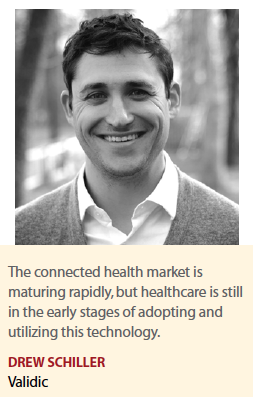 However, Ms. Dennis says there is a naiveté in the industry in terms of how difficult developing and implementing an effective digital strategy is. Pharma must focus on building an app or device that connects to the therapy in a way that will actually drive better outcomes.
However, Ms. Dennis says there is a naiveté in the industry in terms of how difficult developing and implementing an effective digital strategy is. Pharma must focus on building an app or device that connects to the therapy in a way that will actually drive better outcomes.
“Digital companions need to be carefully considered early in the clinical development plan of a new therapy," Ms. Dennis says. “It’s going to take a significant amount of scientific discipline and innovative thinking, and the companies that get this right are going to be the ones that figure this out while they are developing the drug, not after the drug has gone to market."
Pharma companies also need to ensure that technology goes beyond simple data collection, Ms. Sigaud says.
“Data are only useful if the information can be mined for real-world insights to inform individual patient interventions," she says. “While technology can help capture more data than ever before, data feedback needs to be actionable and complete."
Collaboration is Key
Although healthcare stakeholders are diverse, they share the same aim — better health outcomes. Pharma is in a unique position to be able to unite all stakeholders in the healthcare ecosystem — multiple HCPs and specialists, pharmacies and specialty pharmacies, patients and caregivers, Ms. Sigaud says.
“This unique communications hub has the potential to open a dialogue between stakeholders, who may not have otherwise had access to the data and to each other," she says. “For example, this could be two specialists, a specialist and an HCP, or an HCP and a specialty pharmacy. Technology also has the ability to seek out answers to a range of questions — including those concerning beliefs — about data that some stakeholders may not normally have access to. This presents a fuller picture of an individual and enables stakeholders to comment both to the individual and to each other to create a better management platform for the patient, including proven behavior change tools such as problem-solving and building an action plan."
Collaboration represents both an opportunity and a challenge, Dr. Garfield says.
“Progress in this area is going to require collaboration across stakeholder groups from pharma companies to healthcare providers, to patients. That collaboration and the intersection of product development and an understanding of different stakeholders’ needs are going to progress this movement from an idea to improved outcomes," she says.
Dr. Garfield views this as an exciting period, noting that over the next couple of years she expects to see different organizations from different sectors working together and enabling this change.
“There will be a lot of collaborations from organizations we wouldn’t necessarily expect coming to healthcare and improving outcomes," she says.
From partnerships with research and academic institutions, to nonprofit and for-profit corporations, to startups and tech companies, to patients and professionals, successful pharma companies have already developed the understanding and relationships that can foster this level of collaboration, says Faruk Capan, CEO, Intouch Solutions.
“Clearly, it takes a plethora of players to collaborate to make this all work well," he says. “But the pharma industry is unique — companies are already familiar with collaborating with nearly all of those involved. This position can make the pharma industry the connective tissue in this effort. Previous experience will make it possible for new partnerships, which will allow data to come from more places, and make a difference to more physicians and patients, than ever before."
Clinical Implications
Another opportunity where personalized smart health devices will make a big difference is clinical trials. The life-sciences sector is just starting to use these new tools in clinical research, and trial sponsors are beginning the process of validating device data quality and defining the operational processes of a mobile health trial, Ms. Dennis says.
“The transition from the current clinical trial paradigm to mobile-enabled trials won’t happen overnight, but the opportunities for remote monitoring far outweigh the challenges that lie ahead," she says.
When used appropriately, technology is a valuable tool for clinical development. Data collected remotely can be used to augment current validated tests, and ultimately may even be able to replace them.
“Even when used as a secondary outcome measure, remote monitoring data could offer additional insights on a new treatment, improve patient health, and may impact the FDA’s approval decision," Ms. Dennis says.
The advent of smart health devices will allow many more patients to participate in clinical trials, according to John Manns, senior director, clinical innovation, PPD.
“When we consider the topic of personalized smart health, we place our focus on bringing clinical trials to the patient vs. bringing the patient to the trial," he says.
In the industry’s traditional bricks and mortar placement of sites around the world, only a very small percentage of the population — and an even smaller percentage of those who could benefit from a clinical trial — has access to a site.
Figuring out how to use remote technology, telemedicine, on-site nurses, and other innovative methods to expand accessibility to a much greater extent to improve health, as well as determine what can be done to enhance the patient experience is a new priority, he says.
“It is important that we identify and implement more informative, innovative, and efficient clinical-trial methodologies enabled by digital technologies to improve data quality and operational, while reducing research costs," Mr. Manns says. “But we also need to look outside of our industry to improve how we do that."
At Pfizer, the company views today’s landscape as one of collaboration, as it shares data from studies in hopes that this will foster faster and better discoveries in the future, Ms. Sewards says.
“Pharma companies are the holders of some of the most robust and deep data in the clinical space, we have an opportunity to use that data, while appropriately managing patient privacy, and make data available, when appropriate, to others who are pursuing scientific discoveries," she says.
Citing TransCelerate as a great example, Ms. Sewards says Pfizer shares with a number of pharma companies placebo and control arms from studies.
“Another example is Project DataSphere where we share oncology data across companies to improve the design of future clinical trials," she says. “We are at an interesting inflection point where partnership is key and both traditional pharma stakeholders as well as newer technology entrants have to change and learn together."
According to Mr. Capan, this is a perfect opportunity for pharma companies to un-silo data.
“GlaxoSmithKline and Leo Pharma, among others, already make their clinical trial results public regardless of whether the outcomes are positive or negative," he says. “Approaching data-sharing in this spirit of transparency and with a mindset for the greater good will benefit all stakeholders."
(Editor’s Note: For more information about clinical applications for personal smart health devices, see bonus content in Digital Edition.)
Although the industry is in the early stages of taking advantage of the benefits that personalized smart health tools can bring to all stakeholders, companies are learning, our experts say.
Pharma companies can help make outcomes-focused medicine a practical reality, Mr. Capan says.
“While tech solutions providers figure out how to analyze the outcomes, pharma companies have the institutional knowledge to figure out what outcomes can be affected, and which data can give an accurate view of patient care," he says. “Pharma companies have an opportunity to shift programs from a focus on the initial product sale to emphasize end-result outcomes for the patient."
“While the consumer health device market is maturing and there is an ever-increasing number of options available to patients, we in healthcare are still in the early stages of adopting and using this technology," Mr. Schiller says. “Over the course of the next five years, we’re going to see great strides being made in providers’ use of connected health solutions. We’ve already seen a lot of movement in just the last two years." (PV)


















